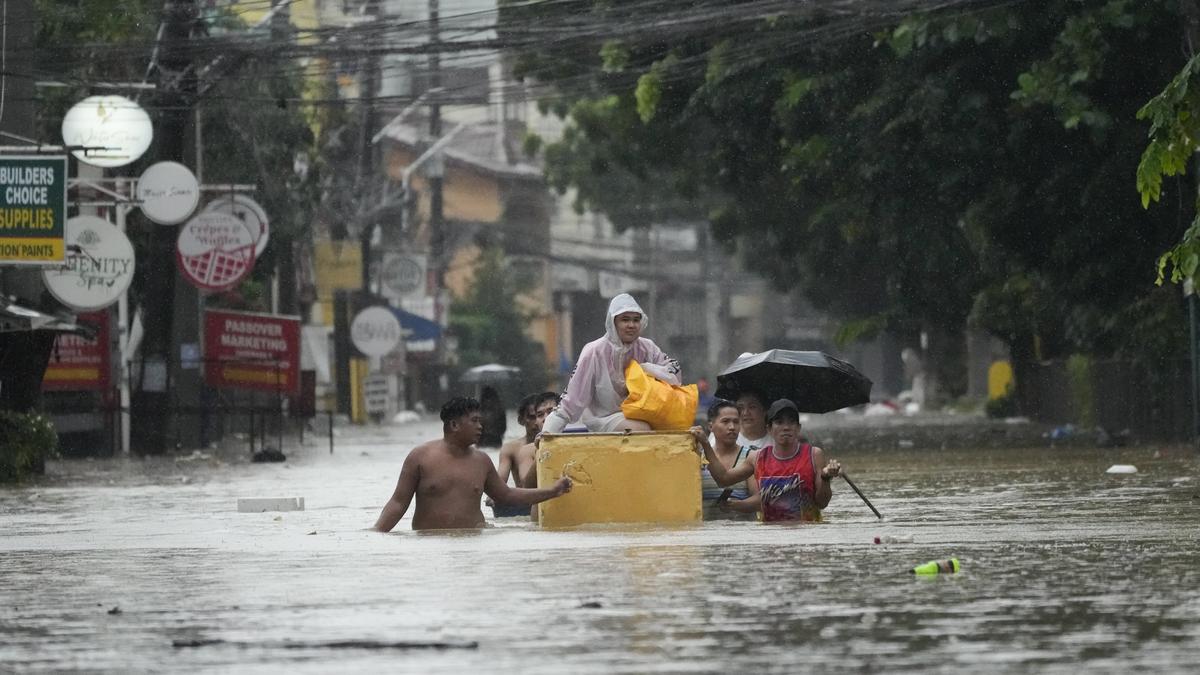Tropical Storm Yagi, known locally as Enteng, battered the northern Philippines with heavy rains and landslides, resulting in at least 14 fatalities and prompting widespread disruptions in the capital region. The storm, which made landfall in Aurora province on September 2, 2024, brought strong winds and torrential downpours, causing widespread flooding and triggering multiple landslides.
Devastating Impacts of Landslides and Floods
The storm’s destructive power was evident in the numerous landslides it caused. One particularly tragic incident occurred in Antipolo City, Rizal province, where a landslide struck two shanties on a hillside, claiming the lives of at least three people, including a pregnant woman.
Multiple Landslides and Drownings
The storm’s impact wasn’t limited to a single location. In total, at least 14 people lost their lives due to landslides and drownings. Apart from Antipolo City, four villagers perished in swollen creeks in the same area.
The storm also caused flooding across the region. Four residents died in separate landslides in Cebu City and Northern Samar province, while three others lost their lives in Naga City – two by drowning and one due to electrocution.
Disruption in Metropolitan Manila
The impact of Tropical Storm Yagi extended beyond fatalities, impacting everyday life for residents of the capital region.
Suspension of School Classes and Government Work
To mitigate potential risks posed by the heavy rains and potential flooding, authorities in Metropolitan Manila suspended school classes at all levels and most government work.
Evacuation Warnings and Flood Prevention
Along the Marikina River in the eastern fringes of Manila, an evacuation warning was issued, prompting thousands of residents to prepare for potential displacement should the river overflow. Meanwhile, in Bulacan province, authorities released a minimal amount of water from the Ipo Dam, a precautionary measure to prevent potential downstream flooding.
Impact on Transportation and Sea Travel
The storm’s disruption extended beyond land. Several domestic flights were canceled due to the stormy weather, while sea travel was temporarily halted in various ports affected by the storm.
Sea Travel Suspension and Accidents
Over 3,300 ferry passengers and cargo workers were stranded due to the suspension of sea travel, and a training ship, M/V Kamilla, was hit by another vessel, resulting in a bridge damage and subsequent fire. Thankfully, 17 crewmembers and cadets were rescued from the vessel, and one swam to safety.
Philippines’ Vulnerability to Typhoons
The Philippines is a nation frequently impacted by typhoons and storms, owing to its location in the “Pacific Ring of Fire.” The country averages around 20 typhoons and storms annually, making it one of the most disaster-prone nations in the world.
Historic Typhoon Impacts
The devastating effects of these frequent storms are evident in the aftermath of past events, such as Typhoon Haiyan in 2013. This typhoon, considered one of the strongest recorded tropical cyclones globally, left more than 7,300 people dead or missing, ravaged entire villages, and displaced over 5 million people in the central Philippines.
Take Away Points
- Tropical Storm Yagi’s impact on the Philippines resulted in a significant loss of life, particularly due to landslides and flooding.
- The storm’s torrential downpours caused widespread disruptions in metropolitan Manila, leading to the suspension of school classes and government work.
- The storm highlighted the Philippines’ vulnerability to typhoons and the need for preparedness and robust disaster response strategies.
- The country’s strategic location in the “Pacific Ring of Fire” exposes it to frequent natural disasters, demanding continued focus on mitigating the risks and ensuring community safety.









